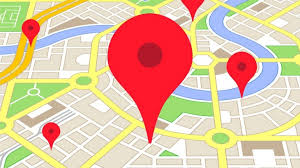Localization: App trends and the Internet of Things
63% of Internet users use maps to make decisions.
 The popularity of trends such as the development and download of localization-related applications, proximity-based Google searches and the use of web maps has doubled in the last year due to recent changes in the way users make decisions.
The popularity of trends such as the development and download of localization-related applications, proximity-based Google searches and the use of web maps has doubled in the last year due to recent changes in the way users make decisions.
“Google Maps is 10 years old; however, it is still an emerging trend that has reshaped not only the way in which users make choices but also the way in which companies communicate with their customers,” explained Diego Carvalho, Google Maps Executive, at our latest GeneXus Meeting in Montevideo (the presentation can be viewed here).
Localization is one of the trends that signal the beginning of a new technological paradigm: The Internet of Things. It is estimated that in the next decade, more than 5 billion people will join the Internet. In addition, over 50 billion connected "things" will be in use; in this context, localization will be a key variable to allow for their remote control and management from anywhere in the world.
“When the first localization apps were launched in 2009, there was no intelligence, and their objective was to enable users to share with friends the places they visited, but not much more than that,” explains Carvalho. Today, applications make it possible to order a taxi, track the distance covered in a day's workout, discover nearby hotels or restaurants with the best ratings, and even meet someone who lives in our neighborhood. However, these innovations are not only reflected in the technological solutions available, because the searches themselves have also experienced some changes: 63% of Internet users currently use maps to make decisions.
Government authorities are examining the possibility of using localization services to monitor construction works taking place in distant areas, or even adjust those constructions that don't fit the corresponding requirements or tender specifications. “Maps or street views are no longer only of public places, but also, and increasingly so, of closed spaces such as soccer stadiums or shopping malls. In this way, users have more accurate information available to make decisions,” explained Google's executive.
Tinder, AirBNB and Uber are clear examples of this trend. Even though they are an established reality, at first they were questioned for breaking the old paradigms. “Uber is a successful project that was built upon a preexisting, highly regulated industry and ended transforming that reality” – says our CEO, Nicolás Jodal – “At present, we developers are looking out for the next wave and getting ready for it.”